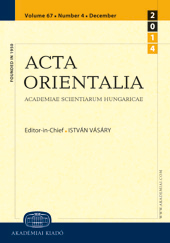The Tantric Rebirth Movement in Modern China
The Tantric Rebirth Movement in Modern China
Author(s): Ester BianchiSubject(s): History, Non-European Philosophy, Comparative Studies of Religion, History of Religion
Published by: Akadémiai Kiadó
Keywords: Tantric Rebirth; Modern China; Tibetan Vajrayāna; Japanese Esoteric Buddhism;
Summary/Abstract: The present study aims to examine the so-called Tantric Rebirth Movement, which is part of the general context of reforms that involved the whole Chinese Buddhist community at the beginning of the 20th century. It was a time when, probably under the influence of the first Western studies in Buddhology, all Asian Buddhist communities began to re-think their own traditions. In China, the main aim was to reform the monastic education and to compare Chinese Buddhism with its original Indian teachings and other Asian Buddhist traditions. Tantrism was generally considered to have disappeared after its 'golden age' during the Tang dynasty. Due to its esoteric nature, to study Tantrism one had to turn to Tibet or Japan because its lineages had been interrupted in China for centuries. A number of Chinese Buddhist monks began thus to participate in pilgrimages to Tibetan areas, becoming disciples of lamas. On their return to China, many of these monks devoted themselves to spreading the Tibetan teachings - and above all the Vajrayana ones - among Chinese Buddhists. Meanwhile, a similar movement was flourishing in the East, mainly focusing on Japanese Esoteric Buddhism. Many masters went to Japan so as to learn and practice the particular form of Tantrism which was widespread among Tendai and Shingon communities, and which was considered to be closely related to the original Chinese tantric teachings. The intention was the same as the 'reformist' monks, that is to deepen the understanding of a different Buddhist tradition, while at the same time re-vivifying the Chinese tantric lineages.
Journal: Acta Orientalia Academiae Scientiarum Hungaricae
- Issue Year: 57/2004
- Issue No: 1
- Page Range: 31-54
- Page Count: 24
- Language: English
- Content File-PDF

